Tesi master theses
Devoto fabrication partner
CNC: real experiences | case studies
Acoustics projects | form | analisys
Custom Families Revit
Data Production model to data
Visual Basic scripting for Revit
Barrisol project for a conferece hall
I've designed the elements of the acoustic chair thinking about
the nesting, and now i'm going to explain the nesting procedure for those pieces.
1_from elements to nesting Most of the space in devoto's boards shall be given to the rpg modules: a pouf model needs 2 x 35 = 70 of these elements, whose function is either acoustic, or static, or both acoustic and static.
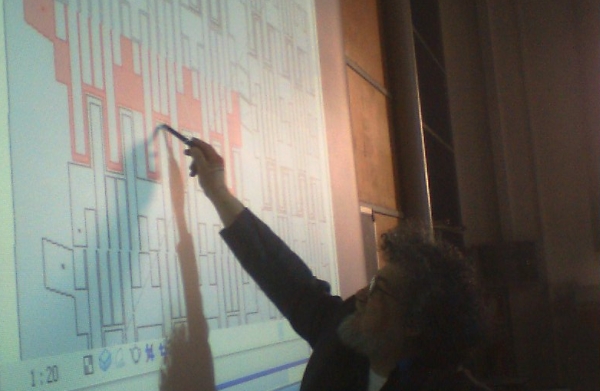
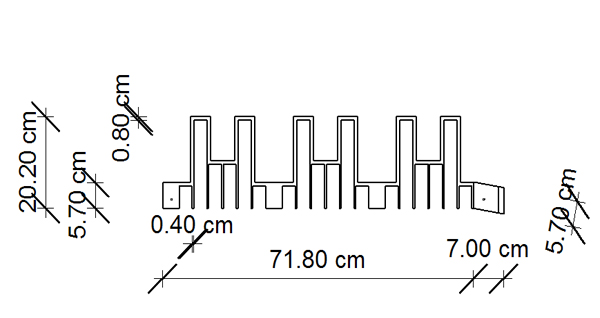 This one is just one variation of the family RPG: i need 5 "types" of this family to cover most of the functions in my design (see ComponenteDevoto_elements). These 5 types are nothing but variations of this module, which is the smallest.
This one is just one variation of the family RPG: i need 5 "types" of this family to cover most of the functions in my design (see ComponenteDevoto_elements). These 5 types are nothing but variations of this module, which is the smallest.
Another consideration to take in account is the fact that i need to produce a "right type" and a "left type" of these component.
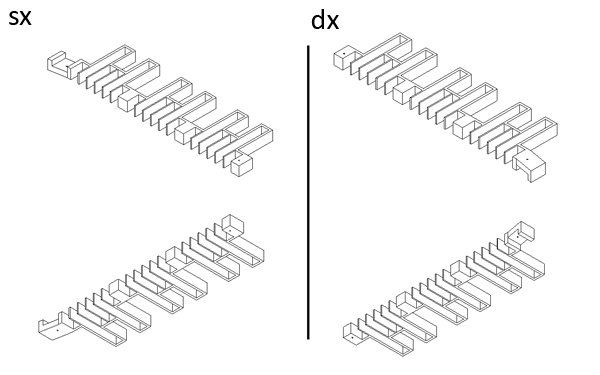
But, since my component is simmetrical, i can produce just one family containing all the types, and then ROTATE IT of 180° on the simmetry axis. Thus the nesting is hugely simplified because i've to nest just the same element 70 times, instead of nesting twice 35 times different (and non-symmetrical) elements.
2_from nesting to elements
This is the most convenient hypothesis of nesting.

We can clearly see that elements in the second line are nothing but the module with a 180° rotation around the Z axis, while to assembly them it will be necessary to rotate them once more as i described before. Moreover, all the amounts of wood to be removed in order to obtain the stiff joint between left and right module, are on the same side of the board: in this way, once the machineries finish to mill the wood on one side, the job is enterely done.
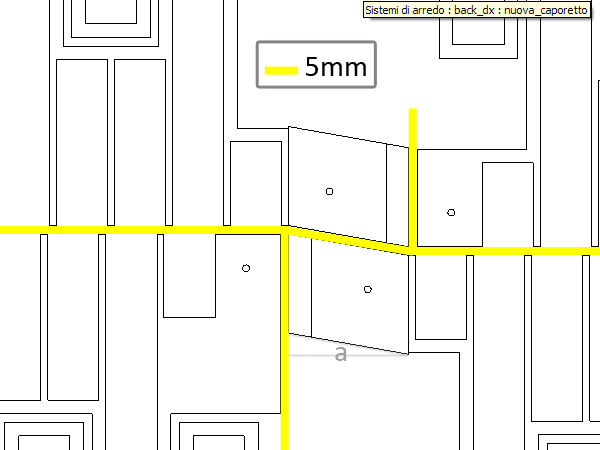
Altough leaving 5mm of space among modules implies a thinner (ans more expensive) manifacturing, this condition is the one that minimize the waste of wood.
The a angle is due to the angled configuration of my design: a is 0° when the angle of the acoustic chair is 90°. a is just a sliding, not a rotation, because of the design: thus the orizontal dimension is always 7cm, while de vertical one varies case by case.
.jpg)
Separating modules by 5mm make possible to nest modules as described in picture. in this way, the waste of wood is minimum.
I'm going to use the blue waste of wood to increase the weigth of bottom-down elements, partially using in this way the waste result of the nesting. Concerning the base elements, i'm just going not to mill the rpgs wells.
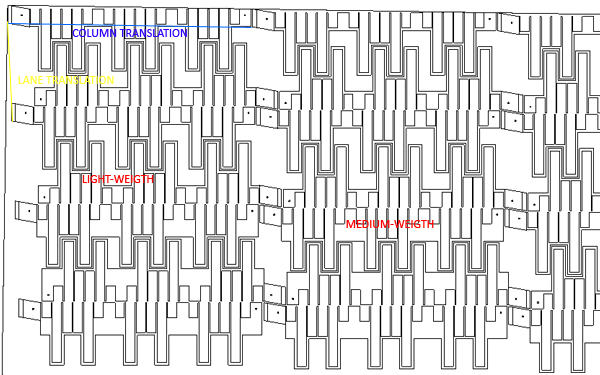
It will be therefore possible to automatize the nesting procedure, using a 3d array macro (automatic nesting will be the object of another post): i'm already able to know the entity of column and lane translation, which are function of 1.the a angle 2.rpg's dimension 3. 5mm separation
3_an example
Here i publish an example of nesting. Other pieces has to be placed manually, since it does not exist a matematical law which aggregate them to the rpg modules.
.jpg)
.jpg)
.jpg)
I need 2 and 3/4 devoto boards, whose dimensions are 120 x 400 x 4 cm. Space among pieces is 5mm minimum. The board is rotated in order to minimize wastes
Commenti recenti